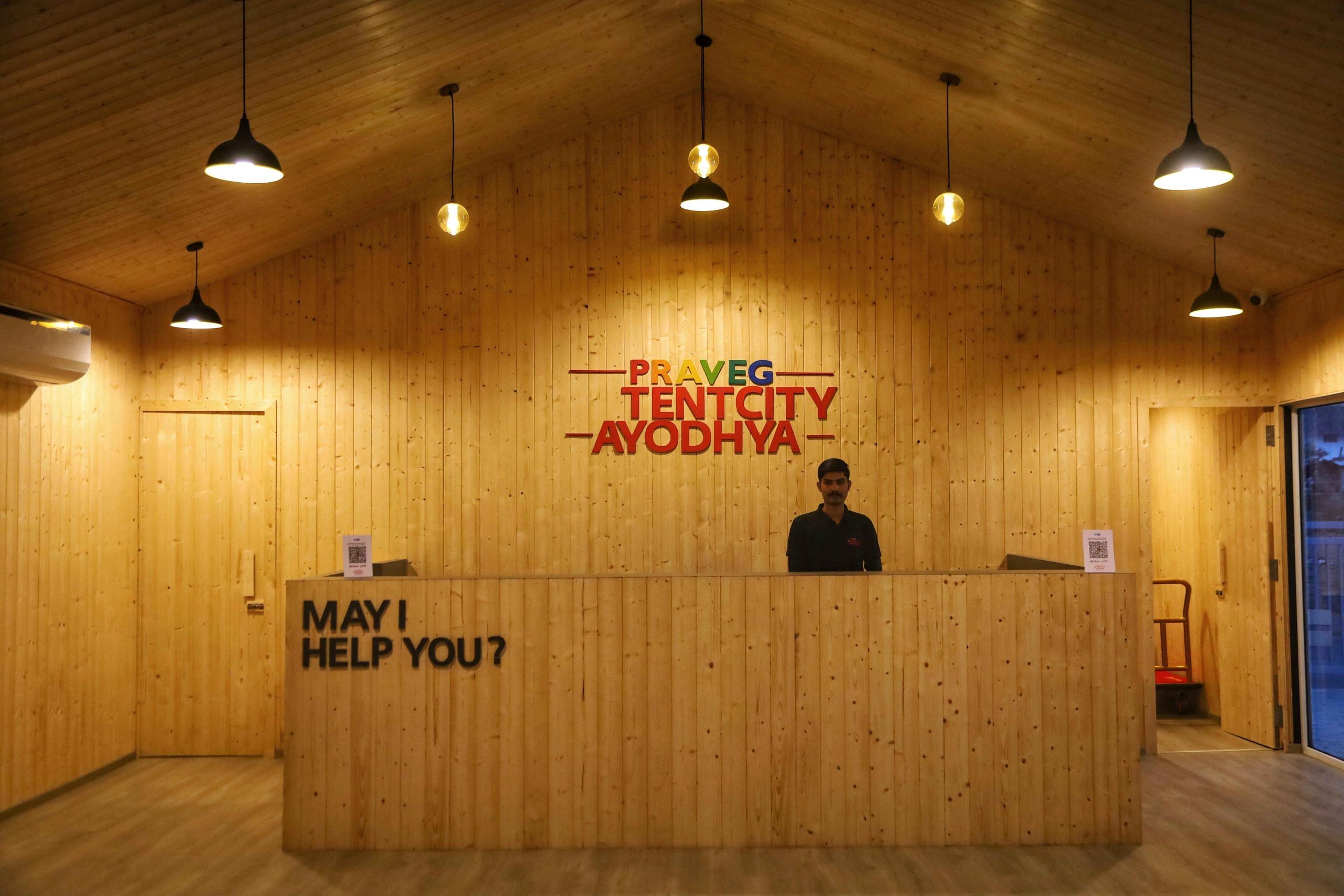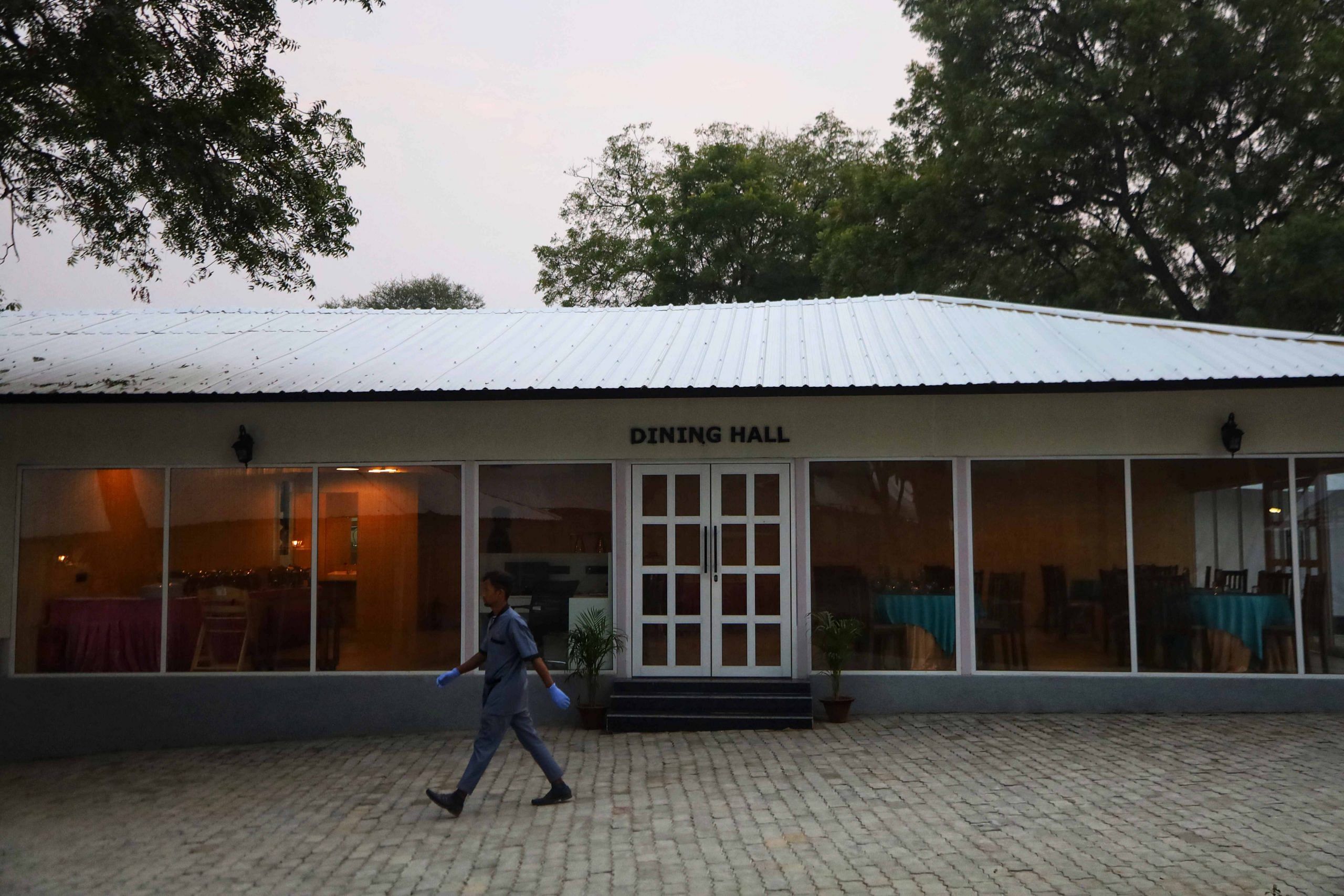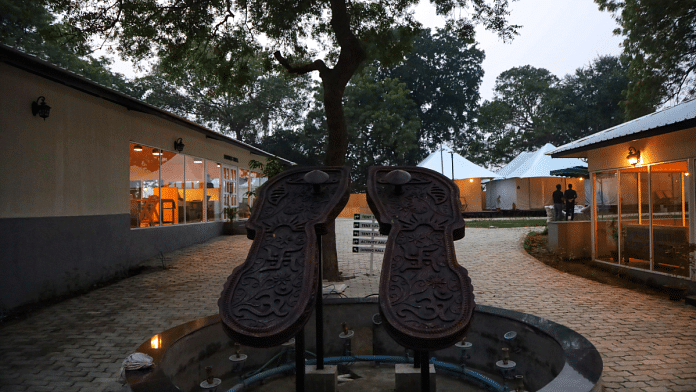Ayodhya: White cottage tents, wooden reclining chairs, air conditioners, sofas and LED TVs — a sumptuously appointed city of tents sprawls near the banks of the Sarayu. It’s one of 15 such encampments springing up in Ayodhya to cater to around 1 lakh people ahead of the grand opening of the Ram temple on 22 January, 2024.
The tent cities are just one piece of the puzzle. Huge preparations are underway as Ayodhya prepares for the pran pratishtha, or consecration, of the idol of Ram Lalla, and a host of ceremonies to follow. As reported by ThePrint earlier, organisations including the BJP, the RSS and the VHP are making a big push to bring visitors to the temple — and the city is getting ready to receive them.
The city — which is getting a Rs, 57,000-crore makeover to transform it into an international religious tourism destination — is putting the infrastructure in place. A 10-kilometre stretch from the city’s main entryway near the Sahadatganj bypass to the Ram temple is marked by homestays and hotels, and ongoing construction to expand the remaining sections of roads. The authorities have arranged buses and golf carts to take visitors to the temple, and built facilities including a three-storey car park and 2,000 new public toilets. They’ve also launched an app to help visitors — ‘Holy Ayodhya’.
Ayodhya is decking itself out for the ceremonies, too. A massive gate will soon stand at the main entryway, while every shop is painted in brown with swastikas and motifs of the gods Ram and Hanuman.
The tent cities, for which the Ayodhya Development Authority had issued tenders, are in their last leg.
Krishan Kant, manager at ‘Praveg’, one of the tent cities, says, “We created this tent city in 45 days on 8,000 square metres of land that was leased out to us by the Ayodhya Development Authority (ADA). We have created as many as 30 tent cottages with German waterproof tents, a dining hall, and open-air seating so that the tourists can have a premium experience.”

The tent cities will offer only vegetarian food and will feature a live cultural show depicting the history of Ayodhya. No alcohol or smoking will be allowed on the premises.
In addition, three tent cities have been created by the Shri Ram Janmabhoomi Teerth Kshetra Trust for the priests, karsevaks, and RSS and VHP members who will be coming from different parts of the country.
“These tents are for our karyakartas and priests who are coming for Ram darshan. These tents have been exclusively created for them,” says a VHP karsevak on the condition of anonymity.
Homestays, buses, golf carts
Besides the tent cities, 600 homestays have been registered in the last three months for tourists visiting the Ram temple.

“We are expecting 30 lakh visitors on the day of inauguration. Even if 10 percent of them decide to stay back, we need a place for at least 3 lakh people,” says ADA vice-chairman Vishal Singh.
To ensure that the roads are not jammed with private vehicles, the authorities have built a three-storey car park one kilometre from the temple. The visitors will have to park their vehicles there and take golf carts to the temple.
Singh says that around 50 buses that can seat 50 people each, and 200 golf carts, have been procured to take visitors to the temple.
Not only that, 2000 public toilets have been created for visitors and hundreds of standpost filter water systems have been installed, says Singh.

Holy Ayodhya app
The Uttar Pradesh tourism department, in coordination with the Ayodhya authorities, had launched the Holy Ayodhya mobile app in October.
The app will give visitors real-time updates on the status of parking, traffic jams and accommodation on the way to the temple.
“We have launched the application to cater to the entire tourist ecosystem. The app will be issuing guidelines to the visitors. So, if visitors land at Ayodhya airport or deboard at the railway station, they can check on the app and get real time updates on parking, stay and other important things,” says Singh.
The authorities had made the app available to devotees during Deepotsav in November. Devotees outside the city were given the opportunity to reserve diyas in their names that would be lit at the ghats, for a price ranging from Rs 101 to Rs 1,100.
(Edited by Rohan Manoj)
Also read: After sharing pictures of ‘ancient Ram temple remains’, trust general secretary says there’s more



